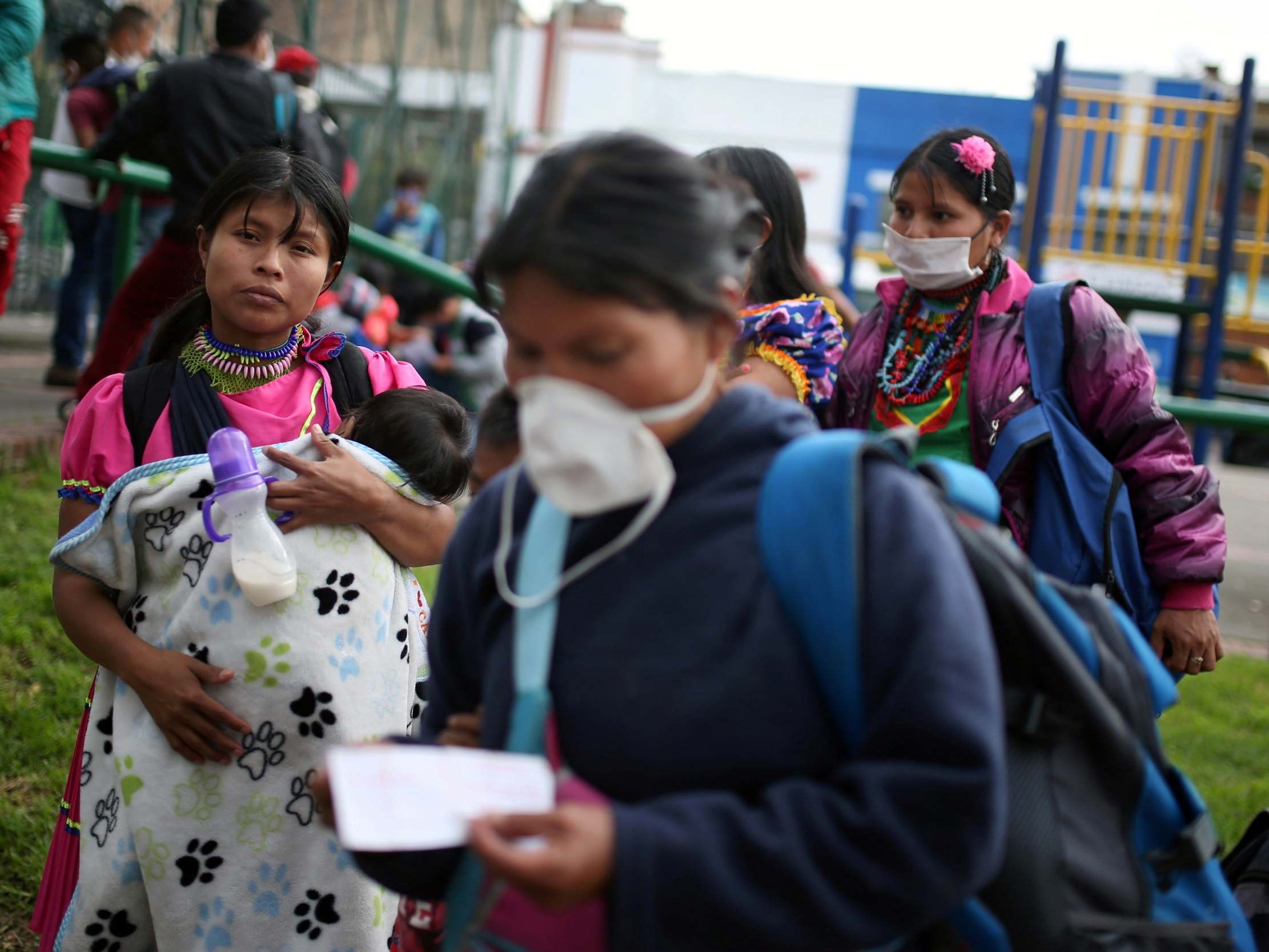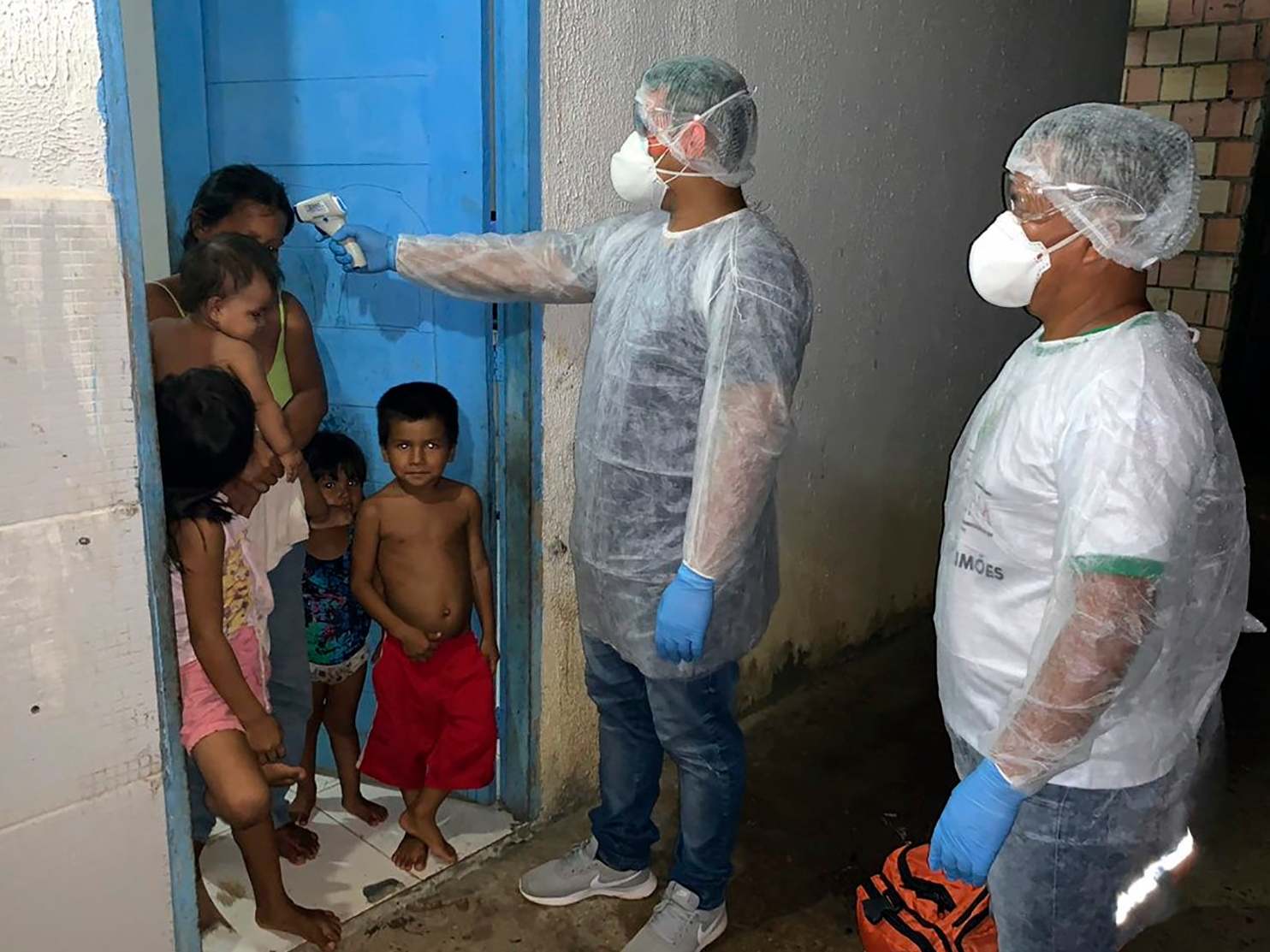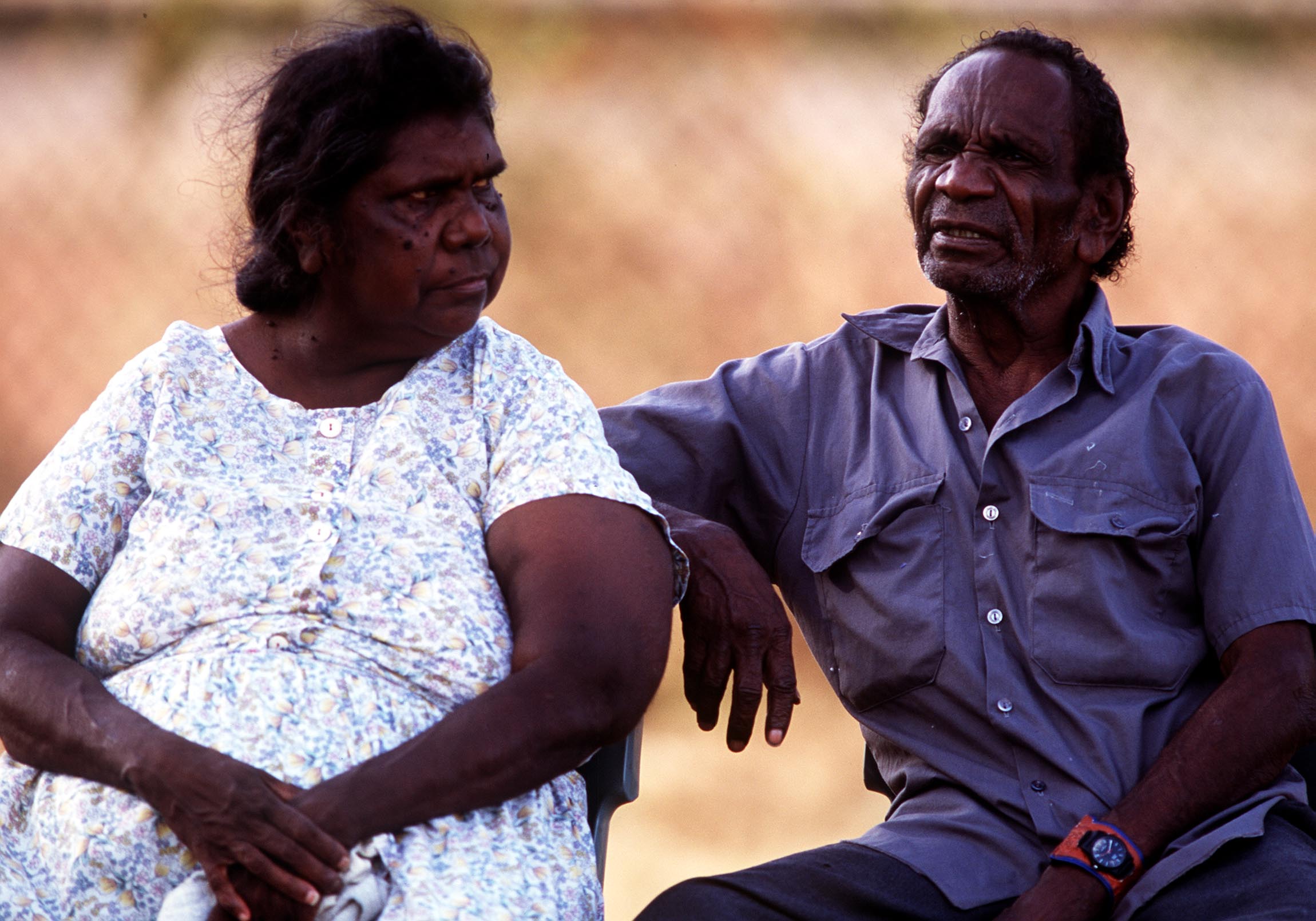‘If Covid-19 gets into our communities, we are gone’
Indigenous communities that rely on communal ways of life are feeling the brunt of this pandemic, and the inequities it will bring about, write Amanda Coletta and Heloísa Traiano

Your support helps us to tell the story
From reproductive rights to climate change to Big Tech, The Independent is on the ground when the story is developing. Whether it's investigating the financials of Elon Musk's pro-Trump PAC or producing our latest documentary, 'The A Word', which shines a light on the American women fighting for reproductive rights, we know how important it is to parse out the facts from the messaging.
At such a critical moment in US history, we need reporters on the ground. Your donation allows us to keep sending journalists to speak to both sides of the story.
The Independent is trusted by Americans across the entire political spectrum. And unlike many other quality news outlets, we choose not to lock Americans out of our reporting and analysis with paywalls. We believe quality journalism should be available to everyone, paid for by those who can afford it.
Your support makes all the difference.From the Canadian Arctic to the Brazilian Amazon to the Australian coast, indigenous groups are racing to protect themselves from a familiar foe that has historically threatened their very existence: The rapid spread of foreign infectious disease.
Fifteenth-century Europeans introduced smallpox and other diseases to the New World, decimating upward of 80 per cent of the indigenous population. The 1918 flu pandemic wiped out entire villages.
Now, as the novel coronavirus advances, indigenous groups are locking down and imploring outsiders to stay away.
The pandemic is exacerbating deep-seated health and socioeconomic inequities throughout the world. Analysts say that makes indigenous peoples particularly vulnerable. In many communities, key services such as water and housing are chronically underfunded. Many are remote, leaving residents no choice but to travel long distances to access anything beyond basic health care services. And indigenous peoples may suffer from higher rates of chronic illnesses, underlying conditions that can put them at greater risk of severe complications from Covid-19.
“You combine all these factors together and what you see is a perfect storm of risks,” says Jeff Reading, a health sciences professor at Simon Fraser University in Burnaby, British Colombia. “If the virus gets into a community ... it will spread like wildfire.”
Anna Banerji, director of global and indigenous health at the University of Toronto’s medical school, says the virus is particularly dangerous for tribal elders, who occupy a special place in their communities as knowledge keepers and language holders.
“To lose, potentially, some elders or many elders all at once could be really devastating,” she says.
Here’s how some indigenous communities are preparing.
Waswanipi, Quebec
The checkpoint went up in the Cree community of Waswanipi in central Quebec earlier this month. Michel Awashish was in charge – and what he saw troubled him.
Too many people were travelling to and from Montreal and Ottawa, where coronavirus cases were ticking up. As the virus spread quickly through Quebec, it inched closer to Waswanipi.
So it sealed itself off to nonresidents. Returning residents must self-isolate for 14 days.
“We’re taking it very seriously,” says Awashish.
At one point, two-thirds of all patients on respirators in Manitoba were indigenous. Leaders asked Ottawa for resources and were sent body bags
More stringent measures, such as banning travel outside Waswanipi, are possible, he says. But the town’s grocery store sells only basic items, so its 2,000 residents often need to travel to a larger market in Chibougamau, about an hour away.
Indigenous people made up a disproportionate number of deaths in Canada during the H1N1 influenza pandemic in 2009. At one point, two-thirds of all patients on respirators in Manitoba were indigenous. Leaders asked Ottawa for resources and were sent body bags. (Health Canada later apologised.)
Prime minister Justin Trudeau, who came to power on a promise to repair the country’s relationship with its indigenous people, has set aside C$305m (£175.5m) to address the needs of indigenous communities during the pandemic. But some worry it’s not enough.
Public health officials in Canada urge social distancing and frequent hand washing as lines of defence against the virus. But in some indigenous communities, where housing shortages mean cramped quarters and tap water is safe for neither drinking nor bathing, such measures are next to impossible.
“We do have overcrowding, but our water is safe to drink,” says Awashish. “Thank God.”
Manoa-pium, Brazil

“Blocked Access. Covid-19,” reads a sign at the entrance of the Manoa-pium indigenous land in northern Brazil. It’s one of more than 100 indigenous communities in Roraima state that has closed its borders to keep out the virus.
Mario Nicacio, a local leader, says the atmosphere is tense. There are shortages of masks, hand sanitiser and medical equipment. As many as 10 people live in a single dwelling – fertile conditions for viral spread.
Nicacio, a member of the Wapichana people, says the pandemic is altering traditions. Members of the same tribe often share a single container of caxiri, a traditional drink.
“We know our collective way of living is a breeding ground for the virus,” Nicacio says. “And we are guiding the population to adapt temporarily.”
Underscoring the fears, a doctor who worked with an indigenous tribe in the Amazon tested positive for the coronavirus last week
Confirmed cases and deaths are swelling in Brazil, where President Jair Bolsonaro last week dismissed Covid-19 as a “little cold”, contradicting his own health officials. Bolsonaro wants to open the Amazon to more commercial development, to the dismay of many of its indigenous inhabitants.
Sofia Mendonca, a public health expert at the Universidade Federal de Sao Paulo, has worked with indigenous tribes in the Amazon for four decades. She says respiratory diseases are a leading cause of death among Brazil’s 850,000 indigenous people.
“[They] will face this pandemic with great difficulty,” Mendonca says. “It can cause a serious reduction in this population.”
Underscoring the fears, a doctor who worked with an indigenous tribe in the Amazon tested positive for coronavirus last week.
Elsewhere, in Sao Gabriel da Cachoeira, where 95 per cent of the town’s 37,000 residents are indigenous, curfews are being imposed and entrances to some tribal lands have been sealed off to outsiders.
Traffic from neighbouring Colombia and Venezuela to the town on the Rio Negro has slowed, says Marivelton Barroso, president of the Federation of indigenous Organisations of the Rio Negro. But still he’s worried.
Only 11 per cent of homes in the municipality in Amazonas state have proper sewage systems, according to the Brazilian Institute of Geography and Statistics. Testing kits and hospital beds are in short supply. There are no ventilators.
476.6m
Indigenous people in the world, in 90 countries
“We do not want to wait for the problem to arise before action is taken,” says Barroso, a member of the Bare people. “The virus cannot get here. Every precaution is necessary.”
Mapoon, Australia

The walls went up around Mapoon last week.
The town on the western coast of Australia’s northeastern Cape York peninsula is one of many remote indigenous communities in the country that has implemented strict travel restrictions to limit exposure to the virus.
Schools are closed. Visitors are banned. Local rangers are on patrol. Anyone who leaves is not allowed back in.
Naseem Chetty, chief executive of the Mapoon Aboriginal Shire Council, says the lockdown is necessary. Many of the community’s 350 residents suffer from underlying medical conditions.
“We don’t want to regret that we could have done this,” she says. “When you think about life, I think it’s more important to be proactive rather than reactive.”
The virus’s spread into the community could quickly overwhelm its health care system. The shire has one medical clinic with one bed and one nurse. A 24-bed visitor accommodation centre has been converted into a temporary hospital.
At the town’s grocery store, there are limits on purchases of staples such as flour and rice. A plane delivered more food and supplies last week, but Chetty still anticipates shortages of products such as jam and tomato sauce.
Prime minister Scott Morrison gave states and territories authority this month to restrict entry into and out of indigenous communities, and he advises Australians against travelling to them.
Pat Turner, chief executive of the National Aboriginal Community Controlled Health Organisation, told Australia’s public broadcaster the spread of the deadly virus into Australia’s indigenous communities would be “absolutely catastrophic”: “I can’t be any blunter. If Covid-19 gets into our communities, we are gone.”
© The Washington Post
Join our commenting forum
Join thought-provoking conversations, follow other Independent readers and see their replies
Comments